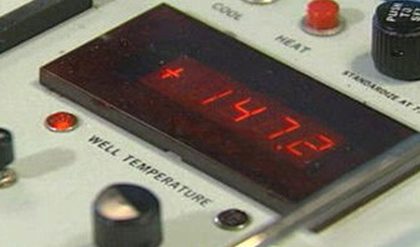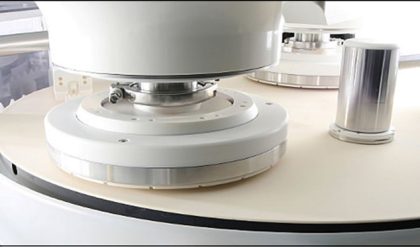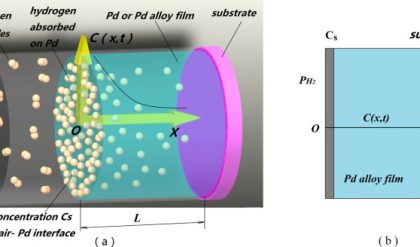In semiconductor manufacturing the term “oxidation” is used to refer the conversion of silicon to silicon dioxide. This can be done by different methods 1. thermal oxidation or 2. electrochemical oxidation. In IC technology, mainly thermal oxidation is used. We will learn the details of thermal oxidation and briefly about electrochemical oxidation. We will also learn about the theoretical modeling of thermal oxidation. It is important to note that the deposition of silicon dioxide (e.g. by CVD) is not called oxidation. Thus the term “oxidation” is used only for converting existing layer of silicon to silicon dioxide. Thus, it is a modification process. We take silicon and modify it to get silicon dioxide. In that sense, it is similar to doping where N- type or P-type material is added to silicon and modify it. Silicon dioxide is often referred to as “oxide” and occasionally as “silica”. What is the importance of the oxide? In the CMOS transistor, the oxide is an essential component. in the gate. It is called gate oxide. Thus it is a essential part of the structure. Second it is used for protecting the silicon surface. Thus it’s a Passivation layer. Silicon dioxide is actually glass. The only difference is the normal glass that we use for making bottles or glass beakers have lot of other materials contaminants whereas the pure silicon dioxide used in the semiconductor applications is of high purity. It is a good insulator and thus it is used as a insulator between the wires and between the transistors. Thus it is also an electrically essential part of this chip. In some processes it is used as a sacrificial layer. We will see the examples later. The other reason we want to study the oxidation process is the following. Whenever silicon is exposed to air or water, it automatically forms a native oxide or a thin layer of oxide. It is very thin i.e. (about 20 A) 2 nm’s thick. Since it forms on the surface all the times, we need to understand the formation process of oxide.
Types of oxidation:
The process can be divided into thermal oxidation or electro chemical oxidation. Thermal oxidation that is heating can be further subdivided into dry and wet oxidation. Dry oxidation means, it is oxidized with oxygen. Wet oxidation means the silicon is oxidized with stream or water vapor.
The overall reaction can be written as ![]() for dry oxidation
for dry oxidation![]() for wet oxidation.
for wet oxidation.
We note some of the important properties of silicon dioxide. First it adheres well to the silicon. Second it is a very good insulator with a very high breakdown voltage. The breakdown voltage is approximately 10 MV/cm which means you can make a very thin gate oxide or silicon dioxide and it will still act as a good insulator. Silicon dioxide has a tetrahedral structure as shown in the figure. For each silicon atom there are four oxygen atoms and for each oxygen atom there are two silicon atoms in the actual crystal form. If we take a single molecule each silicon atom is attached to two oxygen atoms. But in the solid crystal form the structure is given in the figure. If we have a pure single crystalline form called quartz, the density is higher; it is about 2.6 g/cm3. If we take amorphous structure called fused silica the density is about 2.2 g/cm3. So there is some variation between different forms of silica (Silicon dioxide is also called silica). When pure silicon (Si) reacts with oxygen (O2) if forms silicon dioxide. When silicon reacts with water, it first forms Si-OH bonds. The reaction is given below.![]()
The structure that is formed is more porous than pure silicon dioxide structure. So when pure oxygen is used without any moisture, it is called dry oxidation and the oxide that is formed is of good quality. It is dense and it grows at a slow rate. The important point to remember is that water has to be kept out of the system. The good quality dry oxide is used for making structures such as gate oxide. The wet oxidation which is formed due to the reaction between silicon and water is relatively porous but still better than the product one will get using electrochemical oxidation. Since it is a porous it can grow at a faster rate; it will allow the water molecules to diffuse into this. Wet oxide is used frequently for growing sacrificial oxides, where it will be grown and at the later stage of the process, it will be removed (i.e. sacrificed). Since it is not going to form a permanent structure, it is acceptable to have a slightly lower quality oxide.
Sources:
For dry oxygen, the source of oxidant may be compressed oxygen tanks, which do not have any water contamination. For wet oxidation, the water may be supplied by one of the several methods. An inert gas (called carrier gas) may be bubbled through de ionized water maintained near the boiling point. The saturated water vapor will be heated further to obtain steam. The main drawback of this method is that it is difficult to precisely control the quantity of water varpor entering the system. Another method involves supplying hydrogen and oxygen gases and producing the water in situ. Sufficient care must be taken to ensure that explosion does not occur. Excess oxygen may be added to ensure that the explosion potential of the system is maintained at a low level.
Mathematical modeling of oxidation process: The oxidation process can be visualized by the following schematic diagram.

To obtain one unit of silicon dioxide almost half unit of silicon is to be consumed. The oxidation occurs at the silicon and the silicon dioxide interface that is the oxidizing species whether it is oxygen or stream has to diffuse through already existing silicon dioxide. The equations describing the growth of oxides are derived below. The final solution shows that the thickness of the oxide will change with time in a complex manner. At very short times we can neglect certain terms and we see that the thickness is proportional to the time. At longer time, the thickness changes with square root of time.

The concentration of the oxidizing agent (either water or oxygen) will change in the boundary layer (BL) of the gas phase. Let the oxide thickness at any time be ‘x’. The concentration of the species at the outer layer (i.e. oxide and air interface) is given by N0, while the concentration at inner layer (i.e. oxide and silicon interface) is given by Ni. The diffusion flux, given by Fick’s law, is ![]() . The reaction rate at the interface is given by
. The reaction rate at the interface is given by ![]() . i.e. the reaction is first order in oxygen (or water) and zero order in silicon. Under pseudo steady state conditions, the diffusion rate and reaction rate are equal. Hence, the concentration at the interface can be written as
. i.e. the reaction is first order in oxygen (or water) and zero order in silicon. Under pseudo steady state conditions, the diffusion rate and reaction rate are equal. Hence, the concentration at the interface can be written as ![]()
The flux at the steady state is given by 
Based on the Avagadro’s number and the density of oxide, we can calculate the number of molecules of oxide in one unit volume. It is ![]() molecules/cm3. We also know that one mole of oxygen diffusing through the oxide will give one mole of silicon dioxide. On the other hand, in wet oxidation, one mole of steam diffusing through the oxide will give only half a mole of silicon dioxide. Thus, we can relate the flux and the oxide growth rate.
molecules/cm3. We also know that one mole of oxygen diffusing through the oxide will give one mole of silicon dioxide. On the other hand, in wet oxidation, one mole of steam diffusing through the oxide will give only half a mole of silicon dioxide. Thus, we can relate the flux and the oxide growth rate.  , where
, where
n = ![]() molecules/cm3 for oxygen and
molecules/cm3 for oxygen and ![]() molecules/cm3 for water. The initial condition for the above differential equation is given by t = 0, x = xi, where xi is the initial thickness of the oxide.
molecules/cm3 for water. The initial condition for the above differential equation is given by t = 0, x = xi, where xi is the initial thickness of the oxide.




